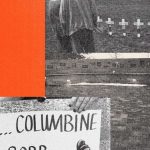The state’s coronavirus case numbers have continued to hover above 1000 well into November as other states record much lower numbers. New South Wales dropped below 1000 cases on September 19, after recording more than 1500 at the peak of their health emergency. With Victoria’s outbreak linked to NSW’s many expected Melbourne to follow the same pattern as our vaccination rates also caught up. But Victoria’s case numbers rose to a far higher peak — a month after New South Wales dropped to three digits — reaching a record 2264 daily cases in mid-October. The seven-day rolling average, as of November 25, has now dropped to around 1145 while in New South Wales that figure is just above 200. With our vaccination rate among the highest in the world – Victoria hit the 90 per cent double dose 12+ milestone on Thursday – hospitalisation numbers has become a far more important indicator of the strain on our health care system. But that doesn’t mean case numbers are completely irrelevant and many have been wondering why Victoria’s numbers have remained persistently high. Deakin University Chair of Epidemiology Prof Catherine Bennett said Victoria and NSW were actually following the same pattern, but we were higher because the peak of our outbreak was larger. “Victoria’s outbreak actually started four weeks later,” she said. “So if you line up the outbreaks, and have day one as the first community cases, Victoria’s cases took off faster and higher.“When we just about hit that 80 per cent (vaccination rate) in Victoria, we had 1600 cases.“When NSW hit their 80 per cent easing, they had a rolling average of 350 cases.“We’ve got about four times the rolling average cases now (still) so we’ve both come down a proportional amount.“The trend is the same and the reproductive numbers look very similar.” The reproductive numbers refers to how many people the average infected person will pass the virus on to. A number of one — meaning every case passes it on to an average of one person — means case numbers stay the same over time. A number below one — the goal — means case numbers drop, while a number above one, means they increase.“We’re following the same pattern,” Prof Bennett said. “It’s just that we had more cases.“In New South Wales, (they’re) looking at 200 cases as their seven day average. “So if that reproductive number sort of pushed up and we’re sitting at 1.1, that would mean that would push up to about 220 cases in four days’ time. “Whereas in Victoria, if ours is at 1.1 when we’ve got a rolling average of over 1000, that’s an additional 100 cases in four days’ time. “So the same reproductive numbers, the same level of control just is different because it’s exponential.” Juliette O’Brien, data journalist and creator of covid19data.com.au, agreed and said “both states have plateaued,” though at different points.“We saw daily cases in Victoria peak more than a month ago,” she said. “If anything, it looked like daily cases were going to fall faster than they were in NSW, albeit from a higher peak. “Both states have plateaued. But while NSW plateaued at around 200 cases a day, Victoria seems to have plateaued at around 1000 cases a day.”She said both states have a “similar effective reproductive number”. “The National Operating Picture says NSW is 0.69 and Victoria is 0.67,” she said. “And the calculation that we use puts them both at about 1.” “Either way, they’re roughly equal, which means the fact that Victoria started at a higher base is really significant.”Prof Bennett said Victoria’s higher base caseload does mean we have to be “more careful” than our northern counterpart. “Because while the control might be exactly the same as Sydney, we’ve got less room to move,” she said. “But the good news is our hospitalisations are continuing to trend down in Victoria. “In New South Wales, they’re stabilising now.“At the same time, we’ve got people who are still in ICU who’ve been there for a while. “So those numbers, while they continue to come down, that drop has also slowed.” Prof Bennett said our reproductive rate fell as vaccination rose, and she’s optimistic case numbers will hover where they are now. “We don’t expect them to continue to decline with the level of mixing that we have,” she said. “We expect to at least hold and so far, so good.“Even with the extra degree of opening, we haven’t seen that really translate to concerning numbers.” “Hopefully as the weather improves, and people are outdoors, kids are out of school … all those things slow it down a bit further as well.”She said “it’s looking promising” but next week will be key. “If things were really going to turn around with the bigger degree of opening ten days ago in Victoria, the next week is going to be the critical one to look closely at what’s happening with the trends,” she said. “But equally, we’d already had households mixing, we’ve already had unvaccinated people at retail shopping. “So we’re not expecting it to be radically different, but whatever the impact is we will get a good feel for that over the next week.”
Powered by WPeMatico




